http://www.training-conditioning.com/2012/07/18/a_case_for_training_the_neck/index.php

WWW.concussionpreventionprotocol.com
A Case for Training the Neck
By Ralph Cornwell, Jr., Ph.D. (abd)
To protect athletes from concussions and other head injuries, strength coaches should focus on strengthening the neck and trapezius muscles. In fact, the author argues that neck strengthening should be a training priority.

In a tradition that dates back centuries, physicians take the Hippocratic Oath before they practice medicine. In the original interpretation of the oath, a doctor would swear to “prescribe regimens for the good of my patients according to my ability and my judgment and never do harm to anyone.”
This code of moral conduct offers up valuable lessons to strength coaches and athletic trainers who work with the “patient” in their world: the athlete. Strength coaches are charged primarily with the duty of preparing athletes for the rigors of their chosen sport. Referring back to the Hippocratic Oath, one could argue that increasing the performance of an athlete should become the second priority for strength coaches because a great athlete standing injured on the sidelines does no one any good.

Instead, the top priority for strength coaches should be a training regimen targeted first at protecting their athletes from harm as they tune them for competition. If strength coaches look first to protect their athletes from potential harm and prepare properly and diligently the most vulnerable region of athletes’ bodies, one could argue that the number of serious sports injuries could be reduced or minimized.
And what is the most vulnerable region of the body that, if traumatized, could lead to a serious, possibly life-threatening injury? Without question, it is the neck region (cervical spine).
The neck supports the head, which encases the hierarchy of human beings’ functions, the brain. The trapezius–either of the two large muscles that run from the base of the back of the skull to the middle of the back–makes it possible for persons to raise their heads and shoulders. In essence, these muscles act as the foundation and support the driving force at the top of the body–back to the brain. If the foundation is strong, then the head is better supported and the brain better protected.

Given the critical role these muscles play, one would think the neck and trapezius would be at the top of strength coaches’ regimens for their athletes. But in a recent survey I distributed as part of my dissertation, over 200 college and university strength coaches were asked about their neck/trapezius training regimens, and their answers revealed this muscle region has a lower training priority than others. Survey questions ranged from “does your weight room have a four-way neck machine,” and “do you do any direct stimulation to strengthen the neck,” to simply “how important is training the neck in your program?”
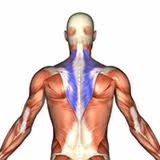
The lack of emphasis on training this area may be explained by the fact that many coaches are simply unaware of the importance of training the neck and the trapezius muscles, which the neck relies on to dissipate forces. If strength coaches knew of the vital role the neck plays in sports performance, as well as the importance of increasing neck strength, then these results may have been very different.

Muscle regions other than the neck/trapezius area were emphasized in most strength-training programs. Does the following sound familiar when examining many of the nation’s strength training programs? Athletes use the bench press for the upper body; squats and leg presses for the lower body; and some abdominal and lower back work. This is a complete regimen, as many would suggest, if the strength coach’s only priority is the performance of the athlete rather than protection of that individual.
However, by training the neck and trapezius muscles, strength coaches can enhance protection and performance of their athletes. A stronger neck increases the strength of an athlete, who then functions as a complete working unit. For example, consider that the trapezius muscles run from the base of the back of the skull all the way to thoracic vertebrae 12. Overlooking such a critical and major muscle group certainly does not enhance an athlete’s overall performance.

To minimize head injuries, let’s revisit the neck/trapezius area and see how these muscles play a critical role. Neck muscles act as springs and shock absorbers; bigger, stronger necks can better absorb with less deformation. Recalling the laws of physics, consider the neck as a cylinder. The larger the circumference of the cylinder, the more load it can support without buckling.
As training the neck area increases strength there, the soft tissue thickens and the neck becomes stiffer. Using physics again to explain the necessity for stiffness, view the neck as a coiled spring. The thicker the coils of the spring, the greater the stiffness ratio. A smaller, less stiff spring is easier to compress from an axial-loading standpoint. A stiffer spring–or stronger neck–deflects greater frontal or side impact forces.
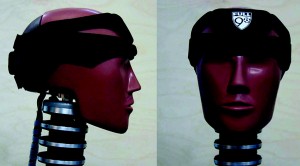
All variables being equal, if a given cylinder increases its diameter by two inches–say from six inches to eight inches–the deformation decreases 43 percent. Common sense, simple logic, or even strong speculation suggests that a bigger, stronger neck would give an athlete a better chance of avoiding serious injury when absorbing impact forces during collisions.
And female athletes should not avoid training the neck area, just because many think they will get a “fat neck” from such conditioning. Biologically, females do not achieve the hypertrophy that males do, but they can benefit greatly from the strength gained in this region of the body.

Training the neck area in four directions–flexion, extension, and left and right lateral flexion–followed by a shoulder shrug exercise offers the most effective direct stimulus to this region of the body. Neck machines are great devices to help with this training, but if strength coaches cannot afford these machines, they should educate themselves on the protocol of manual neck resistance, along with a barbell or dumbbell shrug.

Relating back to the original premise, if strength coaches truly believe their first priority is to protect the athlete and prevent injury, and that the neck and cervical spine are at risk during competition, why would they not train this region of athletes’ bodies religiously? If strength coaches train all the agonist and antagonist muscle groups but neglect the neck and trapezius area, are they truly preparing their athletes effectively for the rigors of their sport? Well-informed strength and conditioning professionals would see the logic in this premise and would want to help their athletes in any way they could.
Strength coaches need to find 30 minutes twice a week to train the neck and trapezius area. With effective time management and efficiencies, any strength and conditioning program could meet this objective. In setting up a strength training facility, would it not make sense also that for every station, say, for squatting, there would also be a station for protecting the brain and turning the head?

As these questions tumble forth, again the Hippocratic Oath comes back into play–“to prescribe regimens for the good of my patients.” Maybe the essence of that document created long ago can have relevance in more ways than one to strength coaches everywhere today.
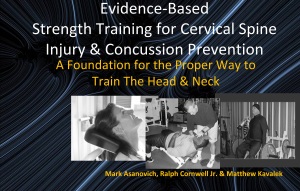
Acknowledgments
I would like to thank Dan Riley for all of his help and wisdom over the years. I would like to thank Mike Gittleson for his guidance with this article and the completion of my Doctoral Degree. Also, special thanks to Chris Potter Mechanical/Structural Engineer for his help and insight. Lastly, I would like to thank Tyler Hobson for the use of a great neck machine that will allow me to finish my research.
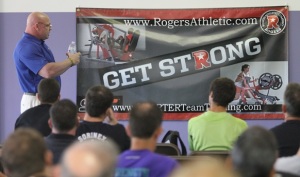
Ralph Cornwell is a Ph.D. candidate in health promotion/human performance at Virginia Polytechnic Institute and State University, with additional course work in sports psychology. A Certified Strength and Conditioning Specialist through the National Strength and Conditioning Association. An honors society member, he currently is conducting a case study on neck injuries and the prevention of or leasing of concussive forces. He has more than 17 years experience as a strength and conditioning coach, consultant and lecturer. Having derived his training philosophy from Dan Riley while with the Washington Redskins, Cornwell has worked with high-school, collegiate and professional athletes–including those in the National Football League, Major League Baseball and Major League Soccer–as well as women’s soccer and lacrosse players, NFL Europe athletes, European and Russian basketball players, and several international players from Africa and Australia. He has been the head strength and conditioning coach at Radford University, the University of North Carolina at Greensboro, and North Carolina Agricultural and Technical State University, and assistant coach at the United States Military Academy at West Point. Cornwell points to the fact that he never had an injury in a weight room where he was the head coach. At age 45, he still trains as hard as any of his athletes.
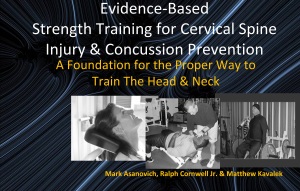 You will know how to properly strength train the muscles of the head and neck. The Protocol you will be taught is the Only Evidence-Based, clinically tested method proven to lower concussion rates, reduce likelihood of spinal injury,and simply create an athlete better prepared for contact. The Protocol can be performed manually“handson“ or with the Head and Neck ISOlator machine.
You will know how to properly strength train the muscles of the head and neck. The Protocol you will be taught is the Only Evidence-Based, clinically tested method proven to lower concussion rates, reduce likelihood of spinal injury,and simply create an athlete better prepared for contact. The Protocol can be performed manually“handson“ or with the Head and Neck ISOlator machine.

















































